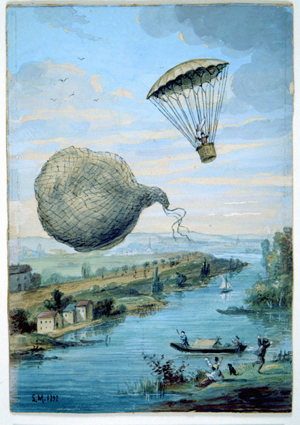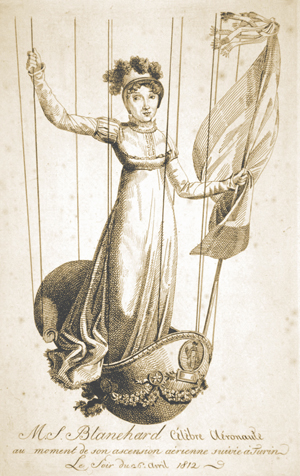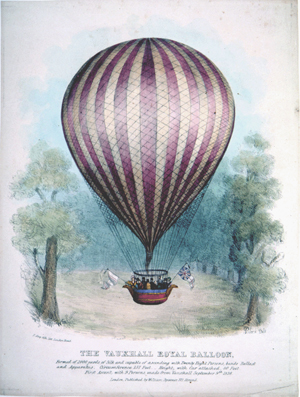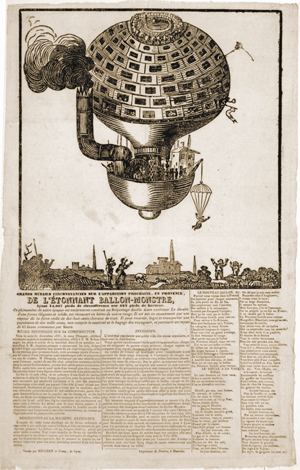Numerous prints celebrate the commemorative use of the balloon in official functions, especially in the Napoleonic era. This print represents a celebration on July 14, 1801, which commemorated the formation of the French republic, a day then referred to as the "Anniversary of the Federation" by the French and now referred to as Bastille Day by English-speakers. It memorialized the taking of the small state prison and fortress, the Bastille, on July 14, 1789, by Parisian citizens after a four-hour battle; to the revolutionaries, the prison represented the arbitrary power of the king, who could imprison without trial. In 1801 the Anniversary of the Federation began at six in the morning with thirty rounds of cannon fire and included displays of statuary, pantomime exhibitions, skits, balls, orchestras, and the balloon ascension depicted here. In the evening, the theatres were opened to the public without charge, and fireworks decorated the sky.
This view of the Champs Elysées shows the scene of the festivities, and the caption relates that a "temple has been constructed in the square of the Champs Elysées, in which the concert was held." The balloon in the background is shown dropping a parachute; it probably is that of André Jacques Garnerin. In the upper left a small, unmanned balloon can be seen. (The Gimbel collection includes numerous examples of this genre, including: XP-XL-9 1318: "The Chinese Pagoda and bridge . . . for the Grand Jubilee of the 1st of August"; XP-XL-9 1319: "Coronation procession of his Majesty George the Fourth 19 July 1821"; XP-XL-9 1321: "London Bridge opened by King William IV and Queen Adelaide, August 1, 1831"; XP-XL-9 1330: "Révolution Française 1848, fête de la Concorde"; XP-XL-11 1369: "Vue perspective du Champ de Mars le jour de la fête donée le 24 Juin 1810"; XP-XL-11 1386: "Entrée triomphante de S.M. Louis xviii dans sa capitale.")















